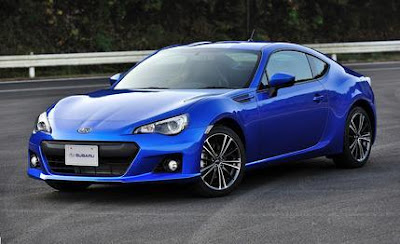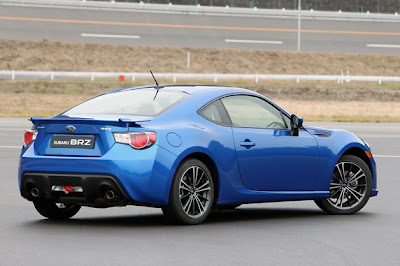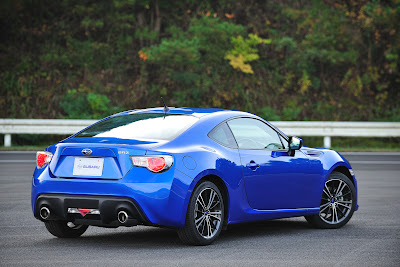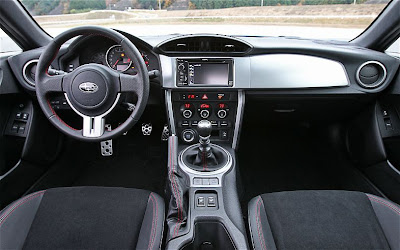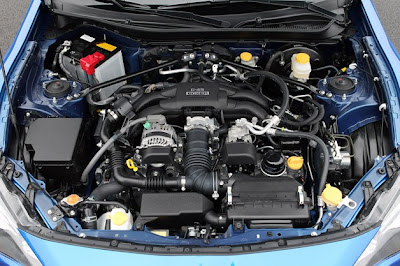We will admit that we never thought of Subaru as a sports-car maker. Yes,
Subaru has made sporty, high-performance cars -- the WRX and STI, of course. But
they were not sports car. Neither was the SVX, although it was cool in its own
way, and the XT coupe before it, which was sort-of cool in a very weird way, was
no sports car, either.
The Subaru BRZ, however, is very much a sports car, and it’s the kind we
don’t see much anymore: light, lithe, fun, and affordable. That’s an unusual
formula in this age of overpriced, overpowered image machines, but it’s not as
strange as the circumstances that created it to begin with.
As you no doubt
know, the BRZ was a joint effort between Toyota and Subaru, with both companies
sharing the resulting sports car. The Toyota version will be sold as the Scion
FR-S in the U.S. market, and as a Toyota elsewhere.
What set the stage for this joint product development was Toyota’s purchase
of a small stake in Fuji Heavy Industries, Subaru’s parent company, back in 2005
(later increased in 2008). With Toyota guiding the product planning, it was
decided that the two companies would collaborate to build a rear-wheel-drive
sports car, the hope evidently being that having both brands selling it would
increase sales for the inherently low-volume product. Toyota was responsible for
the design, which is why the car looks more like a Toyota than a Subaru. The
idea from the get-go was that the two firms would build a single sports car --
not two cars -- so visually differentiating them was not a priority. The very
minor differences we do see, chiefly in the front end, were done late in the
car’s development. In the interest of keeping the car’s cost down, precious few
development dollars (well, yen) were spent to create different looks for Toyota
(Scion in the USA) and Subaru. Subaru did the engineering on the car, although
the company had to meet Toyota engineering targets as well as their own. Subaru
also will assemble the coupes.
At a time when we so often hear about raised
rooflines, higher beltlines, and the “command seating position,” it is unusual
for an automaker to talk about the virtues of getting low. And yet that was an
overriding factor driving the development of the BRZ. Going with a Subaru
horizontally opposed four-cylinder, rather than one of Toyota’s many
conventional in-line fours, got things off to a low start, as the flat four
meant a much more squat engine, which was the first step to achieving a low
center of gravity. This is an all-new boxer engine, and features such as a
slimmer oil pan and uniquely designed intake and exhaust help make it more than
3 inches shorter than Subaru’s existing boxer four. That allowed a lower hood, a
feature that is itself unusual, what with Europe’s pedestrian protection
regulations necessitating additional space between the hood and the top of the
engine. (Subaru’s workaround is a hood that is designed to absorb energy.) A low
hood necessitated a forward-canted radiator and created the need for shorter
front strut towers, which were redesigned accordingly. Even so, the vaguely
Corvette-like fender swells are there to clear them and allow the rest of the
front bodywork to sit lower. Speaking of sitting lower, in order for the driver
to sit low in the car -- and afford decent headroom under the low (50.6-inch)
roofline -- Subaru had to design special frame rails for the front seats.
You do
indeed sit low in this car -- the H-point is nearly 5 inches lower than an
Impreza’s -- in seats that are firm, with prominent side bolsters. The dash, and
the whole interior, is blessedly free of gimmicks -- save perhaps the keyless
pushbutton ignition in the higher-trim model. Switchgear couldn’t be simpler.
The blunt instrument panel is faced with aluminum trim, and that’s the biggest
concession to style, although cheap materials have largely been avoided. A
touch-screen navigation system will be standard in U.S. cars but it was not in
the Euro-spec version we drove. The driving position is excellent, with fairly
upright glass and modest pillars that afford a good view. The longish hood is
framed by those two fender swells. The gauge cluster borrows from Porsche -- a
round, central tachometer with a digital speedometer dominates, flanked on the
left by the analog speedometer and on the right by gauges for fuel level and
coolant temperature. The small, well-shaped steering wheel features red
stitching. Headroom is surprisingly plentiful -- the roof incorporates a “double
bubble” design -- so wearing a helmet on track day should be no problem. There
is no sunroof, however. The car is a 2+2, but the rear seats are strictly
theoretical. Headroom in back is extremely limited, and a taller-than-average
driver is going to have his seat so far back that rear-seat riders will be
hard-pressed to wedge a foot between the front seatback and their seat cushion.
The rear seatback does fold down, however, exposing a wide pass-through to the
6.9-cubic-foot trunk.
Base price: $25,000 (estimated)
Fuel economy:
(city/hwy)
22/30 mpg (manual)
25/34 mpg (automatic)
Engine:
2.0L DOHC H-4
Horsepower: 200 hp @ 7000 rpm
Torque: 151 lb-ft @ 6400 rpm
Drive:
Rear-wheel
Transmissions:
6-speed manual, 6-speed automatic
Curb weight: 2762-2822 lb
Wheels/tires:
17 x 7-inch wheels
215/45 R17 tires
View the original article here

